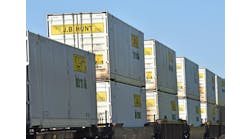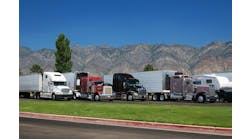In a speech before the University of California's Center for Risk and Economic Analysis of Terrorism Events, the Secretary claimed that the US screens 100% of containers before they come into the country. He differentiated between screening and scanning of cargo. “Simply put,” he explained, “when we scan cargo, we’re trying to determine the contents of every item, but when we screen cargo, we’re simply collecting information about these items so we can assess them for risk.”
With screening, DHS requires information about every incoming shipment, including content, manifests, shipping history and other information. Data gathered in the process is used in the Department's Container Security Initiative (CSI) in the course of which Customs and Border Protection (CBP) interact with off shore port officials and physically inspect any container designated as high-risk cargo.
CSI is presently working at more than 50 overseas ports that account for 85% of US-bound containers. Additionally, the US is installing radiation detection equipment to scan 100% of the containers in selected overseas ports for radiological or nuclear emissions through what's called the Secure Freight Initiative (SFI) in which radiation portals operate simultaneously with traditional x-ray technology. “This program exceeds the requirements of the SAFE Ports Act passed by Congress last year,” noted Secretary Chertoff, “ which include 100% radiological scanning of cargo in at least three foreign ports. We are actually moving forward to conduct scanning at six overseas ports.”
Chertoff's goal is to expand radiation detection capabilities at all US domestic. ports, and points out that there are now 1,000 Radiation Portal Monitors (RPMs) installed at major US sea and land ports of entry. “Over the past two years,” he says, “DHS has more than doubled the percentage of incoming containerized cargo being scanned for radiological and nuclear threats (from 40% to 93%) and more than quadrupled that percentage at seaports (from about 20% to 90%). By the end of next year, we will scan nearly 100% of inbound cargo containers for such deadly material.”


